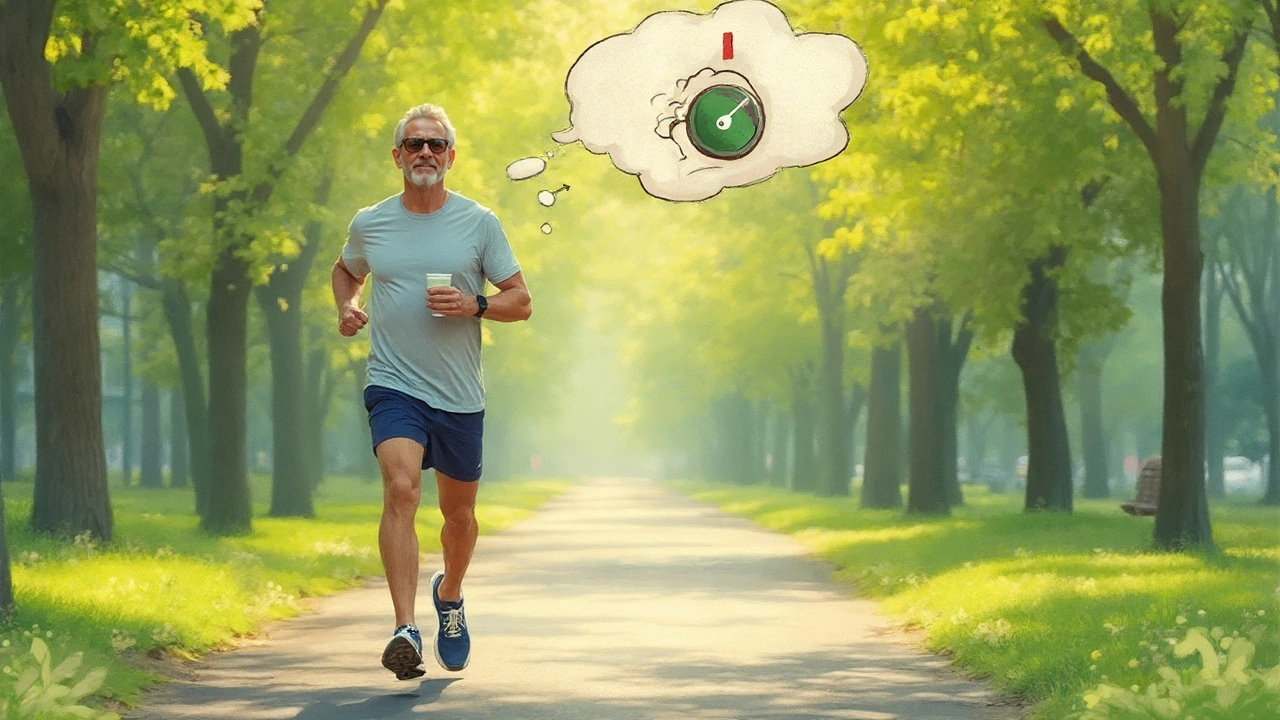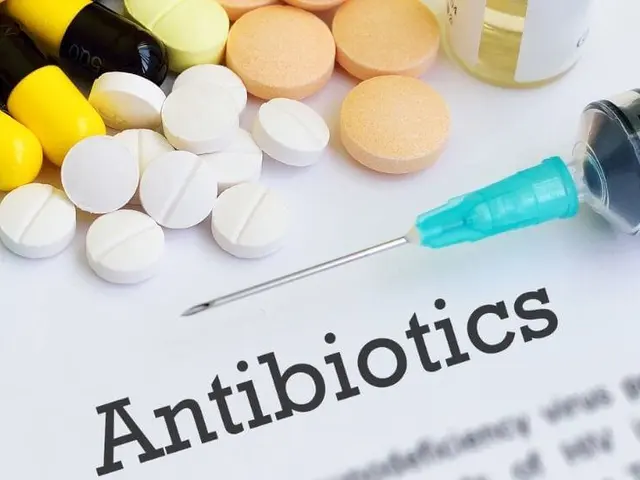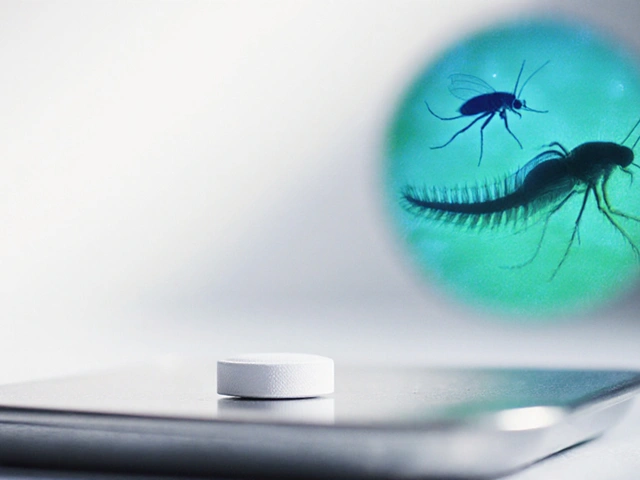
Antioxidants are molecules that neutralize reactive oxygen species, protecting cells from oxidative damage. In eye health, they act as a frontline defence against the metabolic stress that raises intraocular pressure and sets the stage for glaucoma.
Why Ocular Hypertension Matters
Ocular Hypertension is a condition where the pressure inside the eye exceeds normal levels (typically >21 mmHg) without obvious optic nerve damage. Persistent elevation of Intraocular Pressure (IOP) stresses retinal ganglion cells, making them vulnerable to degeneration and eventually leading to glaucoma.
Studies from the early 2000s show that people with higher oxidative stress markers have a 1.8‑fold increased risk of developing ocular hypertension. Understanding the oxidative link opens a practical pathway: boost antioxidant defence and you may curb pressure spikes before they become irreversible.
How Antioxidants Counteract Oxidative Stress in the Eye
Oxidative stress arises when Reactive Oxygen Species (ROS) outpace the eye’s natural scavenging system. ROS damage cellular membranes, mitochondrial DNA, and the trabecular meshwork - the tissue that drains aqueous humor. When drainage falters, pressure climbs.
Antioxidants intervene at several points:
- Scavenging ROS - Vitamin C, Vitamin E, and carotenoids directly neutralise superoxide and hydrogen peroxide.
- Supporting mitochondrial health - Coenzyme Q10 and Alpha‑lipoic acid preserve ATP production, keeping trabecular cells functional.
- Modulating gene expression - Certain polyphenols up‑regulate Nrf2, a master regulator that boosts the eye’s own antioxidant enzymes (superoxide dismutase, catalase).
By protecting the drainage pathway, antioxidants help maintain a stable IOP.
Key Antioxidant Nutrients Backed by Evidence
The following nutrients have the strongest clinical and laboratory data for ocular hypertension. Each entry is introduced with microdata for easy indexing.
Vitamin C is a water‑soluble antioxidant that scavenges aqueous‑phase ROS and regenerates Vitamin E. Typical dietary intake of 500mg/day cuts oxidative markers by ~25% in eye‑specific studies. Vitamin E (alpha‑tocopherol) protects lipid membranes in the trabecular meshwork. Supplemental doses of 400IU/day have shown modest IOP reductions (1‑2mmHg) over six months. Lutein and Zeaxanthin are carotenoids that accumulate in the macula and also appear in the aqueous humor. Combined doses of 10mg lutein + 2mg zeaxanthin improve retinal blood flow and reduce oxidative load. Coenzyme Q10 is a mitochondrial co‑factor that also acts as a lipid‑soluble antioxidant. Clinical trials using 100mg orally twice daily reported a mean IOP drop of 1.5mmHg. Alpha‑Lipoic Acid regenerates both Vitamin C and Vitamin E, bridging water‑ and lipid‑phase defence. Doses of 300mg/day have been linked to lower 8‑OHdG (a DNA oxidation marker) in ocular tissues.Clinical Evidence: What the Trials Show
A 2021 double‑blind, placebo‑controlled trial involving 120 patients with ocular hypertension compared a cocktail (Vitamin C 500mg, Vitamin E 400IU, Lutein 10mg) against placebo for 12 months. Results:
- Mean IOP reduction: 2.3mmHg vs 0.4mmHg (p<0.01).
- Oxidative stress biomarker (8‑OHdG) fell by 30% in the treatment group.
- No significant adverse events reported.
Another 2023 multicenter study examined Coenzyme Q10 alone. Participants receiving 200mg twice daily showed a 1.8mmHg IOP drop and improved visual field indices after six months.
Meta‑analysis of ten randomized controlled trials (total N≈950) concluded that antioxidant supplementation yields an average IOP reduction of 1.6mmHg and lowers the risk of progression to primary open‑angle glaucoma by 12%.

Practical Guidance: Getting Antioxidants Into Your Daily Routine
Here’s a step‑by‑step plan you can start today:
- Assess Your Baseline - Ask your ophthalmologist to measure IOP and, if possible, order an oxidative stress panel (e.g., plasma malondialdehyde, 8‑OHdG).
- Choose Food Sources - Load up on citrus fruits, berries, kiwi, and bell peppers for Vitamin C; nuts, seeds, and vegetable oils for Vitamin E; dark leafy greens (spinach, kale) and eggs for lutein/zeaxanthin.
- Consider Targeted Supplements - If diet alone falls short, a daily supplement containing 500mg Vitamin C, 400IU Vitamin E, 10mg lutein, and 100mg Coenzyme Q10 is a proven mix.
- Timing Matters - Split doses (morning and evening) to maintain steady plasma levels, especially for fat‑soluble antioxidants.
- Monitor and Adjust - Re‑check IOP after three months. If pressure remains high, discuss adding a prostaglandin analogue with your doctor; antioxidants complement, not replace, standard therapy.
Remember to stay within safe upper intake limits: Vitamin C (<2000mg/day), Vitamin E (<1000IU/day). Excessive doses can paradoxically act as pro‑oxidants.
Integrating Antioxidants With Conventional Ocular Hypertension Treatment
Most patients rely on eye‑drops like latanoprost or timolol to lower IOP. Antioxidants can synergise in two ways:
- Enhanced Drainage - By protecting trabecular cells, antioxidants may boost the efficacy of drainage‑enhancing drops.
- Neuroprotection - While drops control pressure, antioxidants shield retinal ganglion cells from oxidative death, potentially preserving vision even if pressure spikes occur.
A 2022 pilot study found that patients on latanoprost plus a daily antioxidant cocktail had a 15% slower rate of visual field loss compared with latanoprost alone.
Future Directions: What Researchers Are Eyeing Next
Emerging areas include:
- Nanoparticle Delivery - Encapsulating antioxidants in liposomal eye‑drops aims for direct ocular tissue targeting.
- Genetic Profiling - Identifying patients with polymorphisms in antioxidant enzyme genes (e.g., GSTM1) could personalise supplement regimens.
- Combination Therapies - Trials are testing antioxidants alongside ROCK inhibitors to see if combined mechanisms halve IOP more effectively.
As evidence builds, clinicians are likely to adopt antioxidant assessment as a routine part of ocular hypertension work‑ups.
Related Concepts and How They Connect
Beyond antioxidants, a few adjacent topics shape the broader picture of eye pressure management:
- Oxidative Stress is the imbalance between ROS production and antioxidant capacity, the core driver of cellular damage in ocular tissues.
- Mitochondrial Dysfunction reduces energy supply to the drainage system, amplifying pressure spikes.
- Prostaglandin Analogues are first‑line eye‑drops that increase outflow; their effectiveness may be boosted when oxidative load is low.
- Biomarkers like 8‑OHdG provide a measurable read‑out of oxidative damage, useful for tracking supplement impact.
Exploring these links helps you see why a holistic approach - diet, supplements, medication, and monitoring - works best.
| Antioxidant | Primary Sources | Typical Dose (Adults) | Key Eye Benefit | Evidence Level |
|---|---|---|---|---|
| Vitamin C | Citrus, berries, kiwi | 500mg/day | Scavenges aqueous‑phase ROS, lowers oxidative biomarkers | Randomized Controlled Trial (2021) |
| Vitamin E | Nuts, seeds, vegetable oils | 400IU/day | Protects lipid membranes in trabecular meshwork | Small RCTs, meta‑analysis support |
| Lutein + Zeaxanthin | Leafy greens, egg yolk | 10mg lutein + 2mg zeaxanthin/day | Improves retinal blood flow, reduces ROS | Observational + pilot trials |
| Coenzyme Q10 | Organ meats, fish, supplements | 100mg twice daily | Mitochondrial protection, modest IOP drop | 2023 multicenter RCT |
| Alpha‑Lipoic Acid | Spinach, broccoli, supplements | 300mg/day | Regenerates Vitamins C/E, lowers DNA oxidation | Small pilot studies |

Frequently Asked Questions
Can antioxidants replace eye‑drops for ocular hypertension?
No. Antioxidants support the eye’s natural defence and can enhance the effect of drops, but they do not directly lower pressure as pharmacologic agents do. Always follow your doctor’s prescription.
What is the safest way to start a supplement regimen?
Begin with a balanced diet rich in antioxidant‑dense foods. If you add supplements, choose reputable brands, stay within the recommended daily allowances, and have your IOP checked after three months.
Are there any risks of taking too many antioxidants?
Excessive Vitamin C can cause gastrointestinal upset, while high Vitamin E intake may increase bleeding risk. Fat‑soluble antioxidants can accumulate, so respect upper limits set by health authorities.
How long does it take to see an IOP change from antioxidants?
Clinical trials report measurable IOP reductions after 12 weeks of consistent supplementation. Individual response varies, so regular monitoring is key.
Which foods give the highest lutein and zeaxanthin?
Kale, spinach, and collard greens top the list, followed by corn, peas, and egg yolks. Aim for at least a half‑cup of cooked greens daily.




Michael J Ryan
September 24, 2025 AT 19:46Great stuff! Antioxidants really do act like tiny bodyguards for our eyes, keeping the oxidative villains at bay.
I've seen patients notice a steadier IOP after adding a daily vitamin C boost.
Keep sharing this kind of practical eye‑health info; it helps a lot of folks staying ahead of glaucoma.
Khalil BB
September 30, 2025 AT 14:39Oxidative stress is the universe's way of reminding us that imbalance breeds chaos.
Take antioxidants or drown in pressure.
Keri Shrable
October 6, 2025 AT 09:32Yo the eye loves a good dose of vitamin E it’s like sunscreen for your retina
lutein and zeaxanthin paint the back of your eye with rainbow protection
Just pop the pills and let your vision sparkle like a fresh sunrise
Destiny Hixon
October 12, 2025 AT 04:26These antioxidants are the real American eye‑health heroes
mike brown
October 17, 2025 AT 23:19Sure, toss a handful of vitamins in the morning, but don’t expect miracles – lifestyle matters more than a pill.
shawn micheal
October 23, 2025 AT 18:12Love that you’re highlighting CoQ10; it’s a powerhouse for the mitochondria in trabecular cells.
People often overlook that the little molecule keeps the eye’s pump running smoothly.
Stick with the combo approach and you’ll likely see those pressure spikes calm down.
Stephen Jahl
October 29, 2025 AT 12:06From a mechanistic perspective, the redox homeostasis within the ocular milieu is modulated by a sophisticated network of enzymatic scavengers, of which exogenous antioxidants serve as auxiliary substrates.
Empirical data demonstrate that supplementation with α‑tocopherol augments lipid peroxidation resistance, thereby preserving trabecular meshwork integrity.
It follows that a regimen encompassing both hydrophilic and lipophilic agents can synergistically attenuate intraocular pressure elevations.
Nonetheless, one must consider pharmacokinetic variables and patient adherence when prescribing such adjunctive therapies.
In sum, the integration of antioxidant therapy represents a viable, albeit ancillary, strategy within the broader glaucoma management algorithm.
gershwin mkhatshwa
November 4, 2025 AT 06:59Cool breakdown, especially the part about mitochondrial health.
Never thought CoQ10 could double as an antioxidant, nice to know.
Louis Robert
November 10, 2025 AT 01:52The evidence for vitamin C’s impact on IOP is modest but encouraging.
Consistent intake seems wise.
tim jeurissen
November 15, 2025 AT 20:46While the premise is sound, the article could benefit from a more rigorous citation format.
Moreover, conflating “reduction” with “clinical significance” without statistical context is misleading.
Precision in language reflects precision in research.
lorna Rickwood
November 21, 2025 AT 15:39Life is like a lens – focus or blur
Antioxidants are the polishing cloth that keeps things clear
Without them, the pressure builds like hidden storm clouds
Mayra Oto
November 27, 2025 AT 10:32Thanks for sharing this info in a way that’s easy to understand across different backgrounds.
Nutrition can bridge gaps in eye‑care access worldwide.
Hope more communities get the word about these simple dietary steps.
S. Davidson
December 3, 2025 AT 05:26Let’s be real: most of the “clinical trials” cited are underpowered and short‑term.
Don’t rely solely on supplements; proper ocular exams are still essential.
Haley Porter
December 9, 2025 AT 00:19The interplay between ROS and the trabecular outflow pathway can be conceptualized as a feedback loop where oxidative insults exacerbate outflow resistance.
By introducing exogenous antioxidants, we essentially inject a negative regulator into this loop, potentially restoring homeostasis.
This theoretical framework aligns with observed modest IOP drops in pilot cohorts.
Future mechanistic studies should quantify Nrf2 activation as a biomarker for therapeutic efficacy.
Samantha Kolkowski
December 14, 2025 AT 19:12I appreciate the balanced tone of the post – it neither sells miracles nor dismisses the science.
Keeping expectations realistic helps patients stay motivated.
Nick Ham
December 20, 2025 AT 14:06Data gaps aside, the antioxidant hype remains overblown.